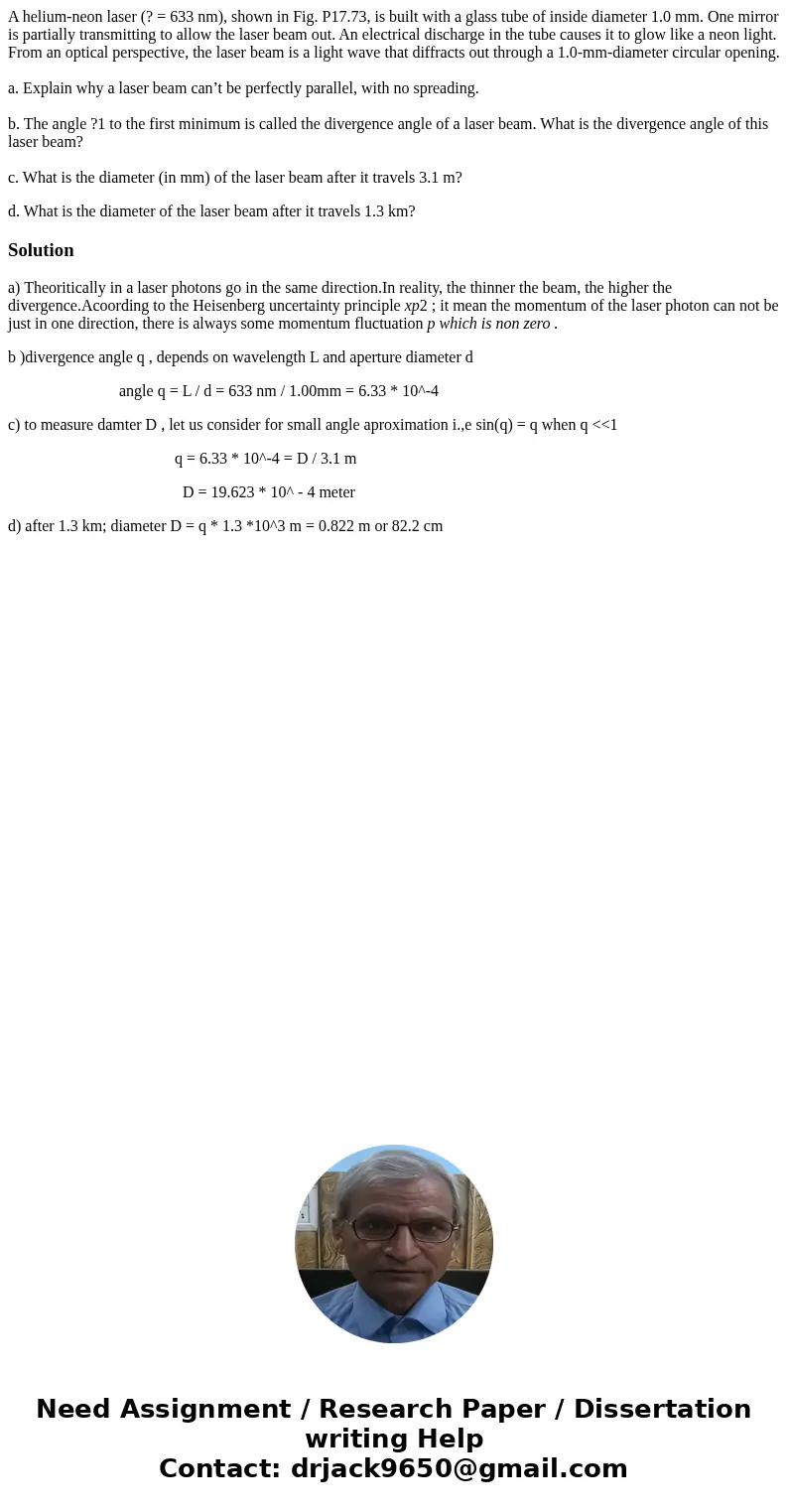A heliumneon laser 633 nm shown in Fig P1773 is built with
A helium-neon laser (? = 633 nm), shown in Fig. P17.73, is built with a glass tube of inside diameter 1.0 mm. One mirror is partially transmitting to allow the laser beam out. An electrical discharge in the tube causes it to glow like a neon light. From an optical perspective, the laser beam is a light wave that diffracts out through a 1.0-mm-diameter circular opening.
a. Explain why a laser beam can’t be perfectly parallel, with no spreading.
b. The angle ?1 to the first minimum is called the divergence angle of a laser beam. What is the divergence angle of this laser beam?
c. What is the diameter (in mm) of the laser beam after it travels 3.1 m?
d. What is the diameter of the laser beam after it travels 1.3 km?
Solution
a) Theoritically in a laser photons go in the same direction.In reality, the thinner the beam, the higher the divergence.Acoording to the Heisenberg uncertainty principle xp2 ; it mean the momentum of the laser photon can not be just in one direction, there is always some momentum fluctuation p which is non zero .
b )divergence angle q , depends on wavelength L and aperture diameter d
angle q = L / d = 633 nm / 1.00mm = 6.33 * 10^-4
c) to measure damter D , let us consider for small angle aproximation i.,e sin(q) = q when q <<1
q = 6.33 * 10^-4 = D / 3.1 m
D = 19.623 * 10^ - 4 meter
d) after 1.3 km; diameter D = q * 1.3 *10^3 m = 0.822 m or 82.2 cm

 Homework Sourse
Homework Sourse